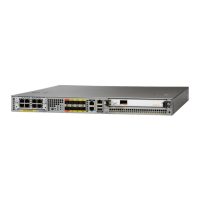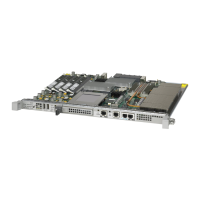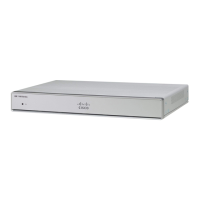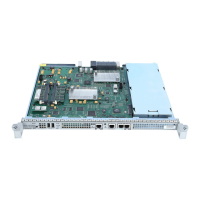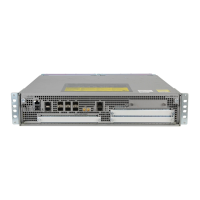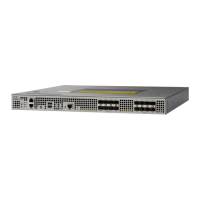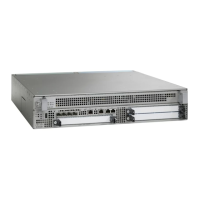6-7
Cisco 10000 Series Router Troubleshooting Guide
OL-0439-02
Chapter 6 Troubleshooting Serial Lines
Using Loopback Tests
Configuring the Loopback Mode for a T3 Controller
You can configure the loopback modes for a T3 controller by using the loopback command:
loopback [local | network | remote]
The default loopback mode for the T3 controller is no loopback.
To return the T3 controller to its default condition, use the no form of the command.
Examples:
• Configure a T3 controller for local loopback.
Router(config)# controller T3 1/0/0
Router(config-controller)# loopback local
Local loopback simultaneously loops all channels toward the router and transmits a T3 AIS to the
network. You can use local loopback to diagnose problems with the port when isolated from the
network cables.
• Configure a T3 port for network loopback.
Router(config)# controller T3 1/0/0
Router(config-controller)# loopback network
Network loopback loops the T3 line back towards the network and can be used to diagnose problems
with cables from the central switching office to the port.
• Configure a T3 port for remote loopback.
Router(config)# controller T3 1/0/0
Router(config-controller)# loopback remote
Remote loopback sends a command to loop the T3 line at the far end (central office). It can be used
to diagnose problems with cables from the port adapter to the switching office.
Configuring a T3 Controller to Respond to Remote Loopback Commands
The equipment customer loopback command allows a port to respond to loopback commands from
remote T3 equipment. The equipment network loopback causes a controller to ignore remote T3
loopback commands.
Syntax:
equipment [customer | network] loopback
Example:
To enable the controller’s ability to respond to remote loopback requests, type:
Router(config)# controller T3 1/0/0
Router(config-controller)# equipment customer loopback
To prevent a controller from responding to remote loopback commands, type:
Router(config)# controller T3 1/0/0
Router(config-controller)# equipment network loopback
Note Remote loopbacks are only available when you use c-bit parity framing.

